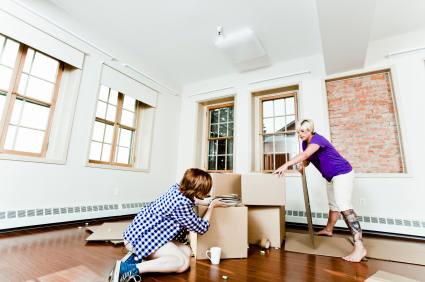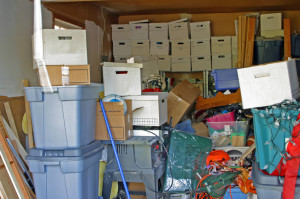Archive for May, 2011

Before you rent, make sure to check out our pre-rental checklist
By Relocation.com Staff
Is it safe? Is it clean? Are the essentials located nearby? Those are the types of questions to ask before you pick a new place to rent and before selecting moving companies. Here a list of things to watch for when you’re looking at apartments for rent or homes for rent.
Outside the Apartment:
Do you feel safe in the neighborhood and the surrounding area? That’s the first and most important question by far, and is always the first question to ask yourself.
If you visit the apartment during the day, think about how will feel coming home late at night, or early in the morning. If the thought makes you scared, move on. No amenities or cheap rent can compensate for the feeling of insecurity.
As part of this, ask your neighbors about safety, and check in with the local police about crime statistics.
Is the building close to major roads and public transportation? Do trial runs for how long it would take to reach your work, your daycare, or other frequently visited placed.
Is the building clean and well-kept? Are entryways and hallways well lit? Are unsavory types hanging about? How the building is kept up is a pretty good indicator of the vigilance of the apartment manager.
Is the laundry nearby? If you don’t have a car, it better be close, preferably in your building. Picture yourself trudging there every week or so and ask yourself how you feel about that.
Where are gas stations, supermarkets, restaurants, banks, drug stores, dentists and gyms – is the distance friendly or far away? If you’re on public transit, figure out how long it will take to get to these various places that you might visit often.
Inside the Apartment:
Before signing a lease and moving, make a quick check of the apartment, not only the appearance and cleanliness, but see that things actually work. Don’t take anything for granted – something that doesn’t work now you’ll have to deal with right away when you move.
Bathroom: Check the water pressure in the sink and shower, and flush the toilet to make sure it operates properly. Also, make sure the hot water works.
Walls: If the building’s near a road, can you hear the traffic? Can you hear the neighbors next door? If near an airport, how is that noise?
Appliances: Check the fridge, the heating and air conditioning, the stove and oven and any other appliances that might be in the apartment.
Windows: Make sure they open and close easily, and make sure there are no holes or cracks in the glass.
Electricity: With any switch you see, try it out to make sure it works.
Don’t forget to like us on Facebook and follow us on Twitter!
• Follow us on Twitter @Relocation_News
• Become a fan of Relocation.com on Facebook

Gorgeous Views of Downtown Austin
This guest post was provided by our friends at Realty Austin, an Austin real estate agency.
Whether you are test-driving a new car or sampling ice cream flavors, sometimes it is nice to try before you buy. Moving to a new city is definitely one of those situations. You’ve probably heard that Austin, TX is an amazing city with lots to offer, (in fact according to the Austin Business Journal, it’s one of the best places to find a job), but truth be told, only you can decide if it is a good fit for you.
One of the best ways to test the waters before making the big plunge is by spending a few days visiting the city while you explore and meet locals. Think of it as research! You’ll get the most out of your experience when you rent a room or house in an Austin neighborhood you might be interested in living in rather than choosing a hotel. There are many great resources on the web that can help you find a great place to stay during your visit.
• HomeAway is an Austin-based company that connects travelers with luxury rental homes. The site offers over 250 places to stay in Austin starting at $50 per night. Each site has detailed photos of the property including amenities, nearby attractions; reviews from people who have stayed there before, and the opportunity to community directly with the owner.
• AirBnB is another great option and features over 490 Austin rooms, homes, and lofts in some of the city’s trendiest neighborhoods for as low as $30 per night. Each rental has the unique charm you’d never experience at a 5-star-hotel. Users can search properties by neighborhood, price, and even connect on Facebook to see where their friends have stayed in the past.
• Finally, Couchsurfing is a non-profit organization that connects travelers with friendly folks who allow guests to stay at their home free of charge for a few days at a time. All users set up online profiles on the site. Travelers can search potential couches to crash, read reviews by former guests, then make a request to stay at a home. One of the best things about taking this route is having a host who can guide you to the best spots in the city.
Visiting Austin before making the decision to move will give you the opportunity to live like a local and meet people who can give you their honest opinions on what it’s like to live there. Take advantage of the many great web resources discussed here and you’ll be sure to get the full Austin experience.

Moving to a new city is a great way to get a fresh start. Follow our tips to make the most of this exciting transition.
By Stephen Davis
Special to Relocation.com
Moving to a new city is like pressing a reset button in your life. It is one of the rare opportunities that you have in life to make a fresh start. The first few days after your arrival are the most important as they will define your subsequent life in the city. The three most basic things that need attention are:
• Accommodation: Finding a new home or apartment.
• Finances: Arranging and maintaining your resources.
• Social Life: Meeting neighbors, friends and discovering new activities.
Start by researching your new city. Visit the central areas, hotspots and recreation centers to get a feel of the city and know what it’s like to live there. Find out other vital information from the web. Things like crime and unemployment rates, major business activity, schools, libraries and emergency services are important to know. Ask friends and relatives who have lived there before or who have visited the area. Once you have some basic background information and a basic layout of the city in your mind, you’ll be in a better position to make the above three decisions.
Choose your new home. Not only the house itself, but also the location in terms of its neighborhood and its proximity to essential places is important. Ask yourself a few questions:
• How many rooms do you need?
• Do you need a yard if you have kids?
• Will you use public transport or your own car? How much are you willing to spend on transport?
• Do you prefer a busy city center or a quiet neighborhood?
Asking these and a few more similar questions will help you make the right choice. Remember that once you make a decision for your housing, it is hard to change it later. If you are not completely sure, try to get a few months lease before deciding on a mortgage.
Search for local amenities. Look for basic services like restaurants, dry cleaners, pharmacies, restaurants and post offices. You want to make sure that these amenities are nearby – especially if you are moving to a new city without a car.
Think about your income. If you have a new job know your salary details. Some employers give a decent loan to help you to settle properly in the new city. If such a loan would help you, ask your employer for details. If you don’t have a proper income source prepared, use your cash wisely until your cash flow is restored.
Discover your new social life. Without good friends and interesting activities, even the most beautiful and comfortable homes become boring. The first step is to organize a housewarming party and invite your neighbors. This is the best way to introduce yourself and have a chat with them. Ask them about the city and the opportunities there. Both career wise and recreation wise. Take their advice about clubs and societies that you may want to join. Ask about good cinemas and theaters, good restaurants and the best shopping places. Plan activities with them and make yourself at home.
Moving to a new city is an exciting time but requires some planning and organizing to ensure that your transition goes through successfully.
Don’t forget to like us on Facebook and follow us on Twitter!
• Follow us on Twitter @Relocation_News
• Become a fan of Relocation.com on Facebook

Consider Having a Housewarming Party to Make Friends in Your Neighborhood.
After moving into your new house, a housewarming party is the best way to show it off and make some new friends. The secret of a successful housewarming party is perfect planning. Here are few tips to help you execute a successful housewarming party after you move.
• Decide on a budget: This is one the first steps in planning the event and will influence all your decisions. Remember, you probably just spent a lot of money on moving and your new home or rental so consider having a small get-together or a pot luck where guests have to bring their favorite dish.
• Your own kind of party: This is your party and you can choose whatever you want. However, if you are planning on a theme or a costume party, make sure your guests are informed well in advance.
• Create checklists: Make checklists for everything and anything that has to be done. Make sure you follow it and keep track of your to do list.
• Decide other activities, if any: If you wish to have something like games and activities on your cards, make sure you plan then well in advance.
• Decide on a menu: Your menu will help you create an impression. Make sure you choose combinations that suit your budget and the weather.
• Create a detailed guest list: Call your close friends, as well as your new neighbors. Make sure you don’t miss out on anyone. Send them invites well in advance and track your RSPVs regularly.
• Make a shopping inventory: Make sure you make a list of all that you need to organize a housewarming. List down beverages, decorations, cutlery, return gifts, etc.
• Revise your checklist: Once you have made your checklist, feel free to revise it and keep adding things when you remember.
• Keep your house clean: During your housewarming party, guests will want to take a tour of your house. Make sure that it is clean and that all moving boxes are unpacked or put away.
• Prepare for the day: Take care of little details: You should know what you will wear for party and at the same time also stock enough beverages and ice for the party.
• Last-minute things: Make sure you have enough CDs or that your iPod is stocked up and ready to go. Even if you don’t have these, make sure there is some backup for music and entertainment.
• Introduce everyone: Make sure you introduce everyone at your party. As you are learning names, be sure to allow your guest to connect with each other.
• Be a good host: Make sure you provide everyone with sufficient amounts of beverages and other foodstuffs. There must be enough water for everyone when they are eating.
• Be cordial: Make sure all your guests feel at home. Take them around your home and make them familiar with all the special details that are included in your pad.
• Photos and videos: Capture plenty of photos and videos of your housewarming. It will prove to be an excellent memory of your first days in your new town.
• Give a vote of thanks: Let your guests know that you appreciate their presence. You may also return their presents with small thank-you notes.
These are only few tips which will help you in planning a perfect housewarming party. Make your guests feel at home and let them enjoy your housewarming party.
Don’t forget to like us on Facebook and follow us on Twitter!
• Follow us on Twitter @Relocation_News
• Become a fan of Relocation.com on Facebook

Recycling is a great way to start with your budget home designs.
By Maria Paulia Belgado
Special to Relocation.com
When decorating your home, have you thought about the impact your decisions make on the environment? These days ‘going green’ usually means paying a premium, just to save the environment. Organic food, biodegradable packaging, eco-resorts – all these things cost at least 25 percent more than their regular counterparts. However, no one said this was a rule – in fact, doesn’t it seem silly in a way, that to be environmentally friendly has to cost more?
But, you don’t have to spend a lot just to save Mother Earth. In fact, you can still be eco-chic, without breaking the bank, with these green design ideas:
First things first – recycle!
Don’t just throw out everything you own. See if there’s anything at all you already have that can be reused in any way. Maybe all you need to spruce up your living room is some new pillows. You can sew new pillow covers using fabrics you have lying around the house. How about those pretty curtains you’ve never put up or maybe some pretty scarves which have gone out of fashion. Before you go to the store and reach for your wallet, look around the house first.
Also, you don’t have to buy everything 100 percent brand new. Go to thrift shops, the Salvation Army or garage stores and turn someone else’s junk into your treasure. You’ll never know what fun and unique items you’ll find, at cheap prices too!
Repaint.
One of the cheapest ways to really change up a room is with a coat of paint. Choose eco-friendly, non-toxic paint with low or no VOC (volatile organic compounds). These might end up costing a little bit more, but instead of calling an expensive painting company do it yourself! This way, you can save money and you can reduce your carbon footprint since you don’t have to ask someone to come in and drive to your home.
Make your own décor.
Why pay a lot for artwork for your walls, when you can make it yourself? Have your own photos done at your local printshop and frame it, so you can hang it on your empty walls. Or why not assemble some old jars and bottles, fill them will pretty stones or seeds and use that as an accent or centerpiece? Eucalyptus leaves last for a very long time and can be used to decorate your bathroom, as well as give you some natural aromatherapy. Cut some stems and wrap them at the end with some recycle ribbon or string. Hang it upside down your shower curtain rod to bring some real green into your bathroom.
Think small.
There’s no need to replace your entire kitchen or living room and spend a fortune just to be eco-friendly. Replace your light bulbs with more energy-efficient ones. Or why not get some inexpensive heat-inductive cookware – these make sure your food is heated up evenly, and therefore you use up less energy to cook. Instead of using harmful chemicals to clean your countertops, use some good ol’ vinegar and water.
There’s no need to blow your budget, especially in today’s tough economic times, just to go green. By thinking creatively, you can save a lot of money, have an eco-chic home and help save the planet.
Don’t forget to like us on Facebook and follow us on Twitter!
• Follow us on Twitter @Relocation_News
• Become a fan of Relocation.com on Facebook

Get rid of your junk before you move.
We finally get to see the amount of stuff we actually have when moving. Throughout the years, many items are replaced and the older ones get dumped in the garage, basement or attic. We also buy new clothes, crockery, upholstery, furniture, electronic gadgets and decoration items that gets added to our pile of stuff. When everything is decorated and in its correct place at home, it all feels less. But that’s not true. When you begin packing your belongings during moving, you realize the true magnitude.
The first thing is to get rid of all the things in your garage, basement and attic that you haven’t used in months, or in some instances, even years. Here are some of the best ways to unload your old junk before moving.
Have a yard sale. When planning a yard sale, start by organizing your items into boxes and labeling them based on their price. You will then have to consider making signs and posting them around your neighborhood to get the word out about your sale. On the day of the sale, set up your items early (people will arrive before the designated time) and be flexible with pricing – this will help you get rid of more stuff quickly.
Donate your belongings. If you don’t have the time for a sale, consider donating your items to a shelter, an orphanage or a humanitarian organization such as the Goodwill or Salvation Army. These non-profit organizations usually need items like clothes, books, canned food, toys, tools, bags and more.
Give them away to family and friends. Many people prefer giving fairly new and useful items to their friends and families. Older models of cell phones, laptops and clothes that no longer fit may be useful to your friends, neighbors or relatives. You can also have a clothing swap party, which can also function as a good-bye party as your friends exchange goods with one another.
Toss it. Sometimes even the best of intentions to pass along your items will fail when you have old and smelly clothes or broken down items that can’t be salvaged. In these instances, it is best to toss your old and useless stuff. Look into recycling centers in your area for old electronics and paper goods.
After getting rid of the garage, basement and attic stuff. Make and inventory of your belongings. For an average family, about one-third of their belongings are still “excess” and its best that you get rid of them too to lighten your load.
Less stuff makes for easier packing, easier travel and most likely cheaper moving expenses. It is also a great way to start fresh without the excess of junk that may have been weighing you down for years.
Don’t forget to like us on Facebook and follow us on Twitter!
• Follow us on Twitter @Relocation_News
• Become a fan of Relocation.com on Facebook